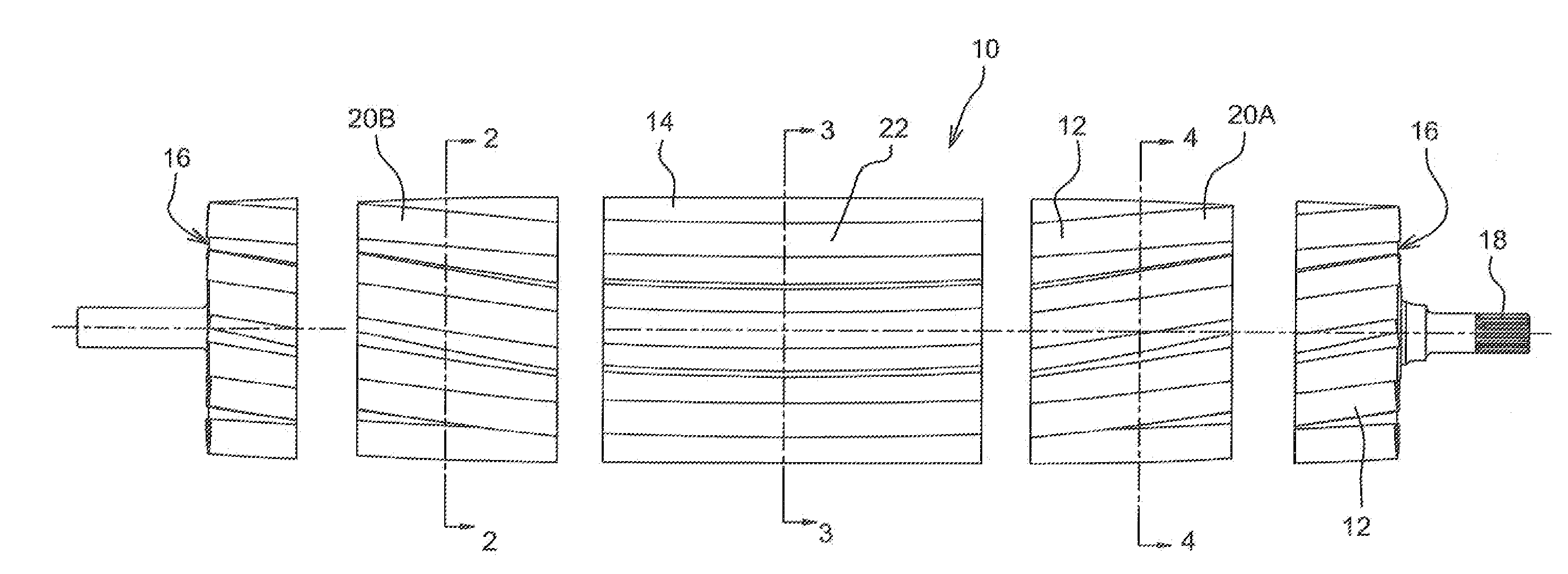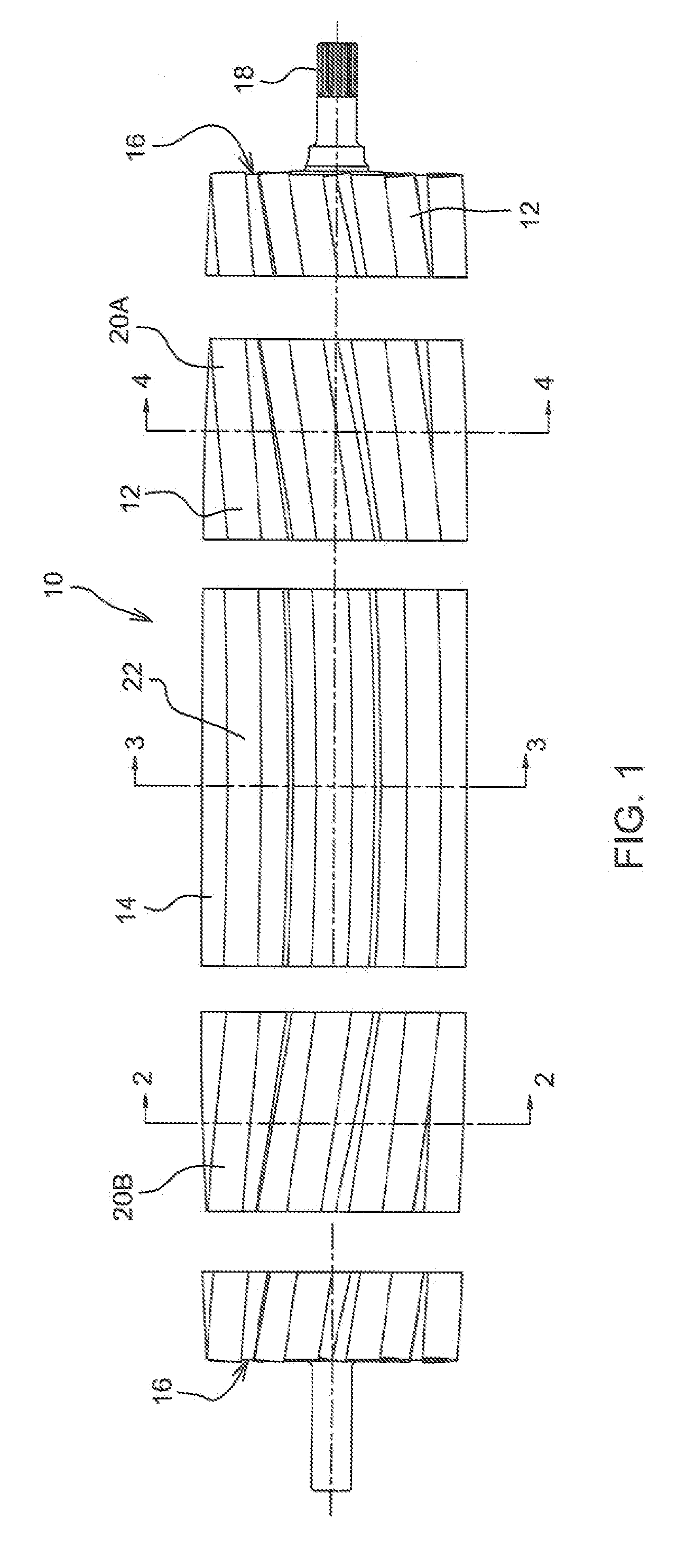Crop Conditioning Roll With Herringbone Flutes Having A Radius
a crop conditioner and a radius technology, applied in the field of crop conditioner rolls, can solve the problems of affecting crop yield, affecting crop growth, and affecting crop growth, so as to reduce crop damage, eliminate crop cutting, and improve crop yield
- Summary
- Abstract
- Description
- Claims
- Application Information
AI Technical Summary
Benefits of technology
Problems solved by technology
Method used
Image
Examples
Embodiment Construction
[0018]With reference to FIGS. 1-4 it can be seen that a metal conditioning roll 10 is illustrated having ribs 12 arranged in a herringbone pattern. Each herringbone roll 10 includes a cylindrical core 14 having a pair of opposite end plates 16 with stub shafts 18 projecting axially outwardly therefrom. Ten ribs 12 are spaced circumferentially around core 14 and project generally radially outwardly therefrom. In a preferred embodiment, each rib 12 is generally an ogival arch in transverse cross-section and hollow, although other configurations such as solid, transversely rectangular or triangular bars may also be utilized. Each rib 12 extends longitudinally of core 14 over its entire length. One segment 20a extends generally helically about core 14 in a right-hand spiral toward apex 22, while the other segment 20b extends helically around core 14 in a left-hand spiral from apex 22. The two rib segments 20 converge from opposite ends of core 14 toward apex 22.
[0019]Those having skill ...
PUM
 Login to View More
Login to View More Abstract
Description
Claims
Application Information
 Login to View More
Login to View More - R&D
- Intellectual Property
- Life Sciences
- Materials
- Tech Scout
- Unparalleled Data Quality
- Higher Quality Content
- 60% Fewer Hallucinations
Browse by: Latest US Patents, China's latest patents, Technical Efficacy Thesaurus, Application Domain, Technology Topic, Popular Technical Reports.
© 2025 PatSnap. All rights reserved.Legal|Privacy policy|Modern Slavery Act Transparency Statement|Sitemap|About US| Contact US: help@patsnap.com



